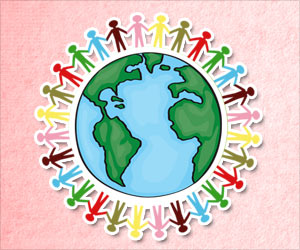- World Hemophilia Day observed annually on the 17th April aims to raise awareness and understanding of hemophilia and other bleeding disorders.
- To align with this year’s theme “Sharing Knowledge Makes Us Stronger”, people worldwide are encouraged to share their personal experiences and knowledge about the disorder.
- Hemophilia is a bleeding disorder where a person bleeds for a longer time than usual mainly due to the lack of factors that make the blood clot.
On 17th April this year, the global bleeding disorders community and the WFH will be coming together to promote and encourage the theme of Sharing Knowledge and the role it plays in building a stronger community.
World Hemophilia Day
World Hemophilia Day was started in 1989 by the World Federation of Hemophilia; the date 17th April was chosen in honor of Frank Schnabel who established the WFH in 1963.WFH continuously acts as a global leader to impart knowledge and empower people with bleeding disorders to live healthier, longer and more productive lives. The WFH spreads the word about hemophilia through knowledge sharing, information exchange, education, and training.
The bleeding disorders community has vast first-hand knowledge, experience and wisdom that can help increase awareness and improve access to care and treatment.
This is the reason WFH has chosen its theme of Sharing Knowledge Makes us Stronger, this year so that the community can share their experiences and knowledge about hemophilia to come together to inspire, support and raise awareness for everyone affected by the disorder. You too can join in the conversation this World Hemophilia Day.
“World Hemophilia Day is a wonderful opportunity for our community to make its presence felt,” explains Alain Weill, President of the WFH. “Our focus this year is on Sharing Knowledge because we are convinced that knowledge and education are key drivers in stronger support for patients in our community. The WFH has a long history of collecting data and sharing knowledge.”
Some of the resources available with WFH are
The WFH World Bleeding Disorders Registry (WBDR) is a web-based data entry system that provides a platform for hemophilia treatment centers to collect uniform and standardized data on people with bleeding disorders. This data collection can be used to advance the understanding and care of people with hemophilia worldwide.An accessible patient registry that can identify, diagnose, treat, and care for people living with bleeding disorders.
Basic demographic information and data on access to care and treatment products collected by the WFH Annual Global Survey to pass on the information hemophilia organizations, hemophilia treatment centers, and health officials to support efforts to improve or sustain the care of people with bleeding disorders.
An online portal called http://elearning.wfh.org/ where you can find more than 500 important resources, including clinical and patient-focused information in six languages in various free, downloadable formats that are well-suited for any learning style or area of interest.
What will happen and what you can do on World Hemophilia Day 2018:
- There will be a global campaign to light up landmarks around the world in red.
- Members of the bleeding community, partners and national member organizations will ensure that local landmarks “Light up red”.
- Many people will light a red light in their home or office – you can do the same to raise awareness in your immediate neighborhood.
- You can make use of World Hemophilia Day resources, such as a downloadable poster and social media badges to spread the word around.
Hemophilia
Hemophilia is an inherited bleeding disorder where a person bleeds for a longer time than normal, because the body cannot make blood clots that are required to stop the bleeding. Bleeding can be external (like in an injury) or internal (in joints or the brain – more common).Hemophilia A and hemophilia B, the two most common types, occur because the body does not make enough of clotting factors VIII and IX respectively.
Hemophilia is predominantly passed on through a parent’s genes, but it can also occur when there is no family history of the condition.
The signs of hemophilia A and B are:
- Big bruises
- Bleeding into muscles of the arm, groin area, thigh and calf, and joints in the knee, ankle, and elbow
- Sudden, spontaneous bleeding without an apparent reason
- Prolonged bleeding after getting a cut, an accident (especially an injury to the head), a tooth removed, or after surgery
World Federation of Hemophilia
The WFH is an international non-profit organization with the main focus on improving the lives of people with hemophilia and other genetic bleeding disorders. The WFH has its headquarters in Montreal, Canada and member organizations in 113 countries and has official recognition from the World Health Organization.References:
- World Hemophilia Day 2018 - (https://www.wfh.org/en/whd)
- Strengthening the Bleeding Disorders Community on World Hemophilia Day 2018 - (http://www1.wfh.org/docs/en/Events/WHD-2018/WHD2018_WFHPressRelease_EN.PDF)
Source-Medindia











